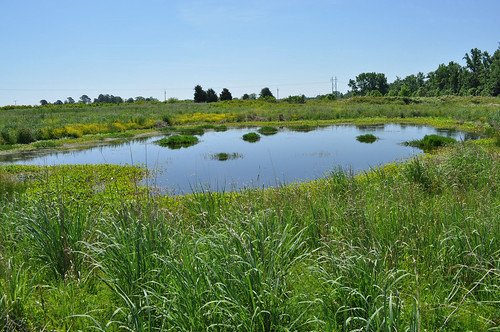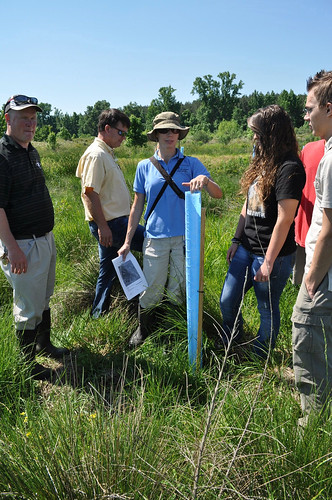
A 53-acre conservation easement is an ideal environmental learning lab for students at Francis Hugh Wardlaw Academy in Johnston, South Carolina. The land was once pastures for cattle, but now it’s a vibrant wetland just across the street from the high school.
The contractor hired to install the restoration work, Charles Kemp, was instrumental in involving the school’s students in creating and managing the wetland. “These students are exploring what a career in agriculture or environmental science would be like, and they love being outside and escaping the confines of the classroom,” Kemp said.
USDA’s Natural Resources Conservation Service provided technical and financial assistance to develop the restoration plan, and install the structures and earthwork to convert the wet pasture into a functioning wetland.
Kemp coordinated with the school’s football coach and director of the agricultural education program, Mark Rodgers, who incorporated the wetland restoration activities into a hands-on learning experience for his students.
Several of the students, like senior Jacob Baynham, hope to make farming a career. He will graduate from Wardlaw Academy in a few weeks and will attend an agricultural college in Georgia.
“When you plant something and watch it grow, you feel a sense of accomplishment, and conservation is so important when it comes to farming,” Baynham said.
Rodgers started the agricultural program two years ago and has been thrilled with the interest and enthusiasm from the students. The students spend 3 to 4 days a week working at the wetland easement. “I want to inspire these students to care about the environment,” he said.
The area was once pastures for livestock. The landowner worked with NRCS through the former Wetlands Reserve Program to create the wetland. The 2014 Farm Bill replaced that program with the Agricultural Conservation Easement Program, which has similar goals.
It’s estimated that 87 percent of the wetland losses from the mid-1950s to the mid-1970s were because of conversion to farms and ranches. This program aims to restore wetlands in places where they’re best suited.
“We traditionally restore altered or degraded floodplains and forested depressions back to wetlands, so converting this pastureland back to its original hydrologic state was unique,” said Sudie Daves-Thomas, a wildlife biologist with NRCS.
When wetlands are drained or altered, this can create very uniform topography through land leveling or other agricultural activities. This wetland restoration plan called for macrotopographic features, which are wetland “ridge and swale” areas.
These are areas that will hold water after a rain event, and they create a diversity of water features, which aid in flood storage, enhance plant diversity and provide important wildlife habitat. The students helped create this wetland by planting almost all of the plants there.
The area is now teeming with amphibians, birds, beneficial insects and native vegetation. Many migratory birds stop at wetland areas on the way to their winter or summer homes, and more than one-third of the United States’ threatened and endangered species live only in wetlands. This South Carolina wetland is now home to shorebirds, songbirds, waterfowl, egrets and herons.
Thanks to the dedication and vision of Kemp and Rodgers, these students are getting a unique educational experience by witnessing what happens when a wetland comes back to life.
This May, NRCS is celebrating American Wetlands Month by sharing the stories of wetland restoration, like this one in South Carolina. To get started with NRCS, visit your local USDA Service Center or www.nrcs.usda.gov/GetStarted.

